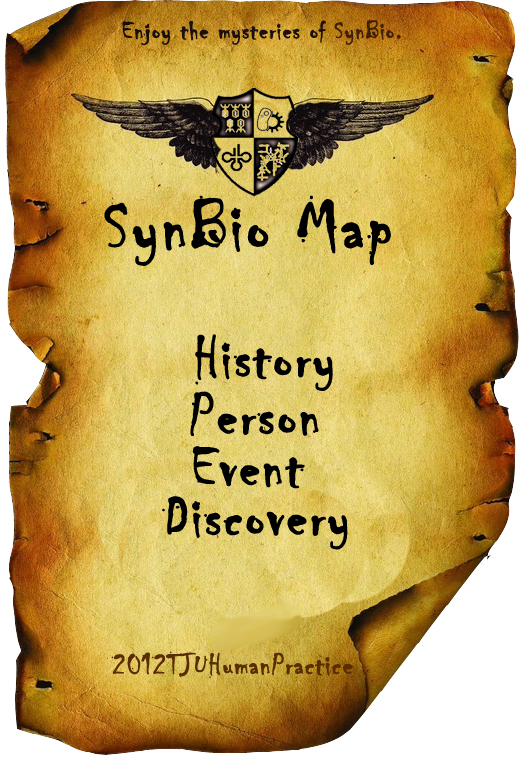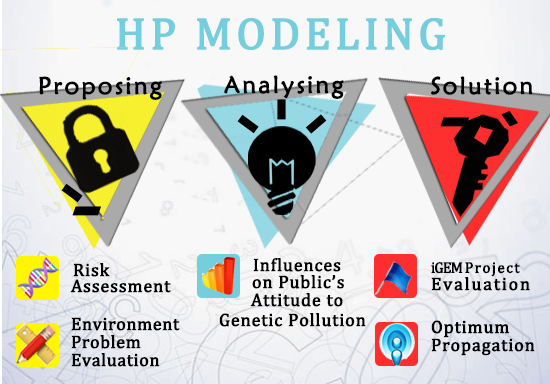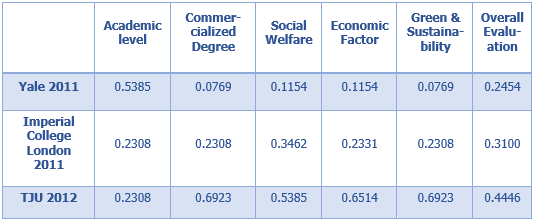Team:Tianjin/HumanPractice/Map
From 2012.igem.org
Austinamens (Talk | contribs) |
Austinamens (Talk | contribs) |
||
| Line 12: | Line 12: | ||
Gene Contamination has been proposed as a potential hazard by Chinese specialist. Transgenic suffered from 3 aspects of nondeterminacy, the chain reactor after the altered of life structure, the potential risk of the food chain and the transgenic contamination, propagation, proliferation, and clear. Until the beginning of the 21st century, transgenic contamination has occurred in many countries world widely, such as Starlink Corn in America, transgenic canola in Canada and corn transgenic contamination in Mexico. All of these facts prove that the hazard of transgenic contamination could not be regarded. But for the limitation of the statistics, many prediction and analysis couldn’t be conducted. In our modeling process, we start from the most fundamental problem, trying to construct a right stream of proposing, analyzing and solving problem from detail to macroscopy. Two models concerning proposing problem predicted the hazard of genetic contamination. The analyzing model focused on a variety factors relating with the attitudes of four major group in society, government, industry, public and institutes. The solving model emphasized on two hands, one is the effectiveness of our project and, on the other hand, the publicizing strategy referring to the necessity of the mastery of the genetic safety knowledge. What’s more, parts of our modeling can be adapted to most of the similar issues, which is a acceptable reference for the followup teams. | Gene Contamination has been proposed as a potential hazard by Chinese specialist. Transgenic suffered from 3 aspects of nondeterminacy, the chain reactor after the altered of life structure, the potential risk of the food chain and the transgenic contamination, propagation, proliferation, and clear. Until the beginning of the 21st century, transgenic contamination has occurred in many countries world widely, such as Starlink Corn in America, transgenic canola in Canada and corn transgenic contamination in Mexico. All of these facts prove that the hazard of transgenic contamination could not be regarded. But for the limitation of the statistics, many prediction and analysis couldn’t be conducted. In our modeling process, we start from the most fundamental problem, trying to construct a right stream of proposing, analyzing and solving problem from detail to macroscopy. Two models concerning proposing problem predicted the hazard of genetic contamination. The analyzing model focused on a variety factors relating with the attitudes of four major group in society, government, industry, public and institutes. The solving model emphasized on two hands, one is the effectiveness of our project and, on the other hand, the publicizing strategy referring to the necessity of the mastery of the genetic safety knowledge. What’s more, parts of our modeling can be adapted to most of the similar issues, which is a acceptable reference for the followup teams. | ||
[[File:2012-TJU-HP-Model.png|center|frame]] | [[File:2012-TJU-HP-Model.png|center|frame]] | ||
| + | |||
| + | ===1. iGEM Project evaluation model=== | ||
| + | ====The problem==== | ||
| + | Our projects need to be evaluated through eyes of public, especially through comparison with other similar projects. Evaluation are difficult to be done without comparison, to evaluate our project of genetic safety, we have compared our '''AegiSafe O-key''' with other similar gene safety projects: that of the 2011 Imperial college of London and of the 2011 Yale University. After thoroughly investigation of how others evaluate scientific projects, we have made up an evaluation system to assess our project through eyes of people who have been introduced about our projects. What is more, this system can also be used to comprehensively evaluate any other iGEM team projects to individual positioning and to simplify and to improve the lengthy evaluation work of iGEM judgers. | ||
| + | |||
| + | ====Our evaluation system==== | ||
| + | In assessing the various projects from the whole world, a comprehensive evaluation contains divergence measurable indexes. We have done so much literature work to make sure that our evaluation system contains all related and useful perspectives. Finally, an overall and systematic evaluation system is established. The frame diagram of this system is shown in the '''Figure 1'''. The shape of the system seems like a tree, so it is also called evaluation tree. | ||
| + | |||
| + | |||
| + | ====How to use the system==== | ||
| + | The evaluation system is also very easy to use, we only need to rank the teams waiting for evaluation through the different perspectives at the leaf note (the points which do not have child note) of the evaluation tree. After collecting of the data, we only need to do some basic calculation to obtain the final result of the evaluation of these teams on different layer of evaluation index. All these calculation results will be very useful to help us to understand all these teams' performance in all possible level and perspectives. | ||
| + | |||
| + | ====The inner operating principles: AHP==== | ||
| + | All the data are obtained from that of questionnaire. And the relative values are transformed through comparison matrix. All the other calculation procedures are flow the previous procedure of [[AHP method]]. | ||
| + | |||
| + | ====Results and discussion==== | ||
| + | * The overall performance of the three teams | ||
| + | |||
| + | |||
| + | |||
| + | * The performance of the three teams in the aspect of overall economic factor | ||
| + | |||
| + | |||
| + | |||
| + | * The performance of the three teams in the aspect of social welfare factor | ||
| + | |||
| + | |||
| + | |||
| + | * The performance of the three teams in the aspect of academic level | ||
| + | |||
| + | |||
| + | |||
| + | * The performance of the three teams in the aspect of green and sustainability | ||
| + | |||
| + | |||
| + | ====Conclusion==== | ||
| + | An overall evaluation system of iGEM team projects is established and tested through our example (comparison of 2011 Yale, 2011 Imperial College and 2012 Tianjin) | ||
| + | |||
| + | [[file:TJU2012-Human-Model1.PNG]] | ||
| + | |||
| + | To test the reasonableness of our assessment method, we carried out a test assessment of three iGEM team: Yale 2011, Imperial College London 2011 and TJU 2012. The results showed TJU 2012 rank first, and then Imperial College London 2011 and Yale 2011. | ||
| + | |||
| + | Though the data in the above table, we can see that Yale 2011 ranks first in academic level. This is in accordance with our general thought. TJU 2012 behaves relatively poor in academic level, which is just the weakness of TJU 2012. | ||
| + | |||
| + | In all other aspects, TJU2012 ranks first. This result is not so reasonable. We have reflected upon this problem and proposed several explanations. The main reason may be that our sample size is not large enough and our questionnaire has some unapparent flaws. We can further refine our assessment in several aspects, as shown below. | ||
| + | |||
| + | Reallocate weight value to each assessment level. To complete the job, we need to more surveys and data. | ||
| + | |||
| + | Reconsider every question and find out the ones with biased tendency. | ||
| + | |||
| + | Size up sample capacity. We need to carry out more surveys in varies people to decrease random deviate induced by individual assessment. | ||
| + | |||
| + | |||
| + | |||
| + | |||
{{:Team:Tianjin/footer}} | {{:Team:Tianjin/footer}} | ||
Revision as of 13:15, 26 September 2012

Contents |
MAP
A novel discipline always needs effort to be spread out, a simple and clear way, of course, is necessary. Textbooks? Papers and Thesis? They may not be accepted by the busy public. A brief picture is much more effective and meaningful than a manual book. By collecting the great achievement and famous scientists in the Synthetic Biology map, it's simple enough for you to know the key point of SynBio from 1980s, when it was proposed, to now. Nothing can raise your desire but our Map. Who defined synthetic biology? What's its first achievement? What trouble did it caused? Come on and take a look at the moment that you have lost in Synthetic Biology.
Download at http://zhan.renren.com/tjuigem2012?from=rrhome
Modeling
Background
Gene Contamination has been proposed as a potential hazard by Chinese specialist. Transgenic suffered from 3 aspects of nondeterminacy, the chain reactor after the altered of life structure, the potential risk of the food chain and the transgenic contamination, propagation, proliferation, and clear. Until the beginning of the 21st century, transgenic contamination has occurred in many countries world widely, such as Starlink Corn in America, transgenic canola in Canada and corn transgenic contamination in Mexico. All of these facts prove that the hazard of transgenic contamination could not be regarded. But for the limitation of the statistics, many prediction and analysis couldn’t be conducted. In our modeling process, we start from the most fundamental problem, trying to construct a right stream of proposing, analyzing and solving problem from detail to macroscopy. Two models concerning proposing problem predicted the hazard of genetic contamination. The analyzing model focused on a variety factors relating with the attitudes of four major group in society, government, industry, public and institutes. The solving model emphasized on two hands, one is the effectiveness of our project and, on the other hand, the publicizing strategy referring to the necessity of the mastery of the genetic safety knowledge. What’s more, parts of our modeling can be adapted to most of the similar issues, which is a acceptable reference for the followup teams.
1. iGEM Project evaluation model
The problem
Our projects need to be evaluated through eyes of public, especially through comparison with other similar projects. Evaluation are difficult to be done without comparison, to evaluate our project of genetic safety, we have compared our AegiSafe O-key with other similar gene safety projects: that of the 2011 Imperial college of London and of the 2011 Yale University. After thoroughly investigation of how others evaluate scientific projects, we have made up an evaluation system to assess our project through eyes of people who have been introduced about our projects. What is more, this system can also be used to comprehensively evaluate any other iGEM team projects to individual positioning and to simplify and to improve the lengthy evaluation work of iGEM judgers.
Our evaluation system
In assessing the various projects from the whole world, a comprehensive evaluation contains divergence measurable indexes. We have done so much literature work to make sure that our evaluation system contains all related and useful perspectives. Finally, an overall and systematic evaluation system is established. The frame diagram of this system is shown in the Figure 1. The shape of the system seems like a tree, so it is also called evaluation tree.
How to use the system
The evaluation system is also very easy to use, we only need to rank the teams waiting for evaluation through the different perspectives at the leaf note (the points which do not have child note) of the evaluation tree. After collecting of the data, we only need to do some basic calculation to obtain the final result of the evaluation of these teams on different layer of evaluation index. All these calculation results will be very useful to help us to understand all these teams' performance in all possible level and perspectives.
The inner operating principles: AHP
All the data are obtained from that of questionnaire. And the relative values are transformed through comparison matrix. All the other calculation procedures are flow the previous procedure of AHP method.
Results and discussion
- The overall performance of the three teams
- The performance of the three teams in the aspect of overall economic factor
- The performance of the three teams in the aspect of social welfare factor
- The performance of the three teams in the aspect of academic level
- The performance of the three teams in the aspect of green and sustainability
Conclusion
An overall evaluation system of iGEM team projects is established and tested through our example (comparison of 2011 Yale, 2011 Imperial College and 2012 Tianjin)
To test the reasonableness of our assessment method, we carried out a test assessment of three iGEM team: Yale 2011, Imperial College London 2011 and TJU 2012. The results showed TJU 2012 rank first, and then Imperial College London 2011 and Yale 2011.
Though the data in the above table, we can see that Yale 2011 ranks first in academic level. This is in accordance with our general thought. TJU 2012 behaves relatively poor in academic level, which is just the weakness of TJU 2012.
In all other aspects, TJU2012 ranks first. This result is not so reasonable. We have reflected upon this problem and proposed several explanations. The main reason may be that our sample size is not large enough and our questionnaire has some unapparent flaws. We can further refine our assessment in several aspects, as shown below.
Reallocate weight value to each assessment level. To complete the job, we need to more surveys and data.
Reconsider every question and find out the ones with biased tendency.
Size up sample capacity. We need to carry out more surveys in varies people to decrease random deviate induced by individual assessment.
 "
"






















